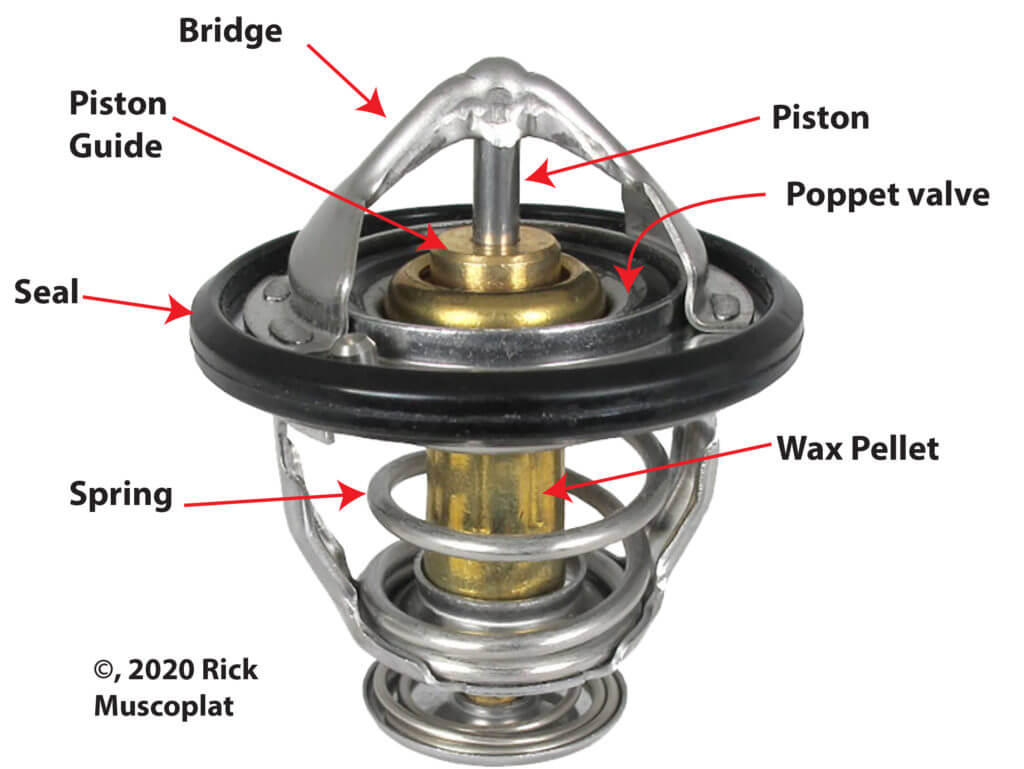How an engine thermostat works
How an engine thermostat works
An engine thermostat regulates the temperature of the coolant in the engine by regulating the flow rate of the coolant. It’s basically a valve that opens and closes to keep the engine temperature around 200°F. Here’s how an engine thermostat works.
The parts of a coolant thermostat
The main component of an engine thermostat is a copper tube filled with a mixture of wax and copper particles. The copper tube is sealed at the bottom and has a seal and guide a the top. The bottom portion of a stainless steel piston is inserted into a rubber “bag” that is pressed into the wax and the top is affixed to the bridge. It’s referred to as a wax “pellet” and it’s the “motor” that opens and closes the poppet valve.
The wax pellet is connected to a circular disc called the poppet valve. The poppet valve seats against the thermostat frame to close off coolant flow.

How a thermostat works
As the engine coolant heats up the heat causes the wax to melt and expand. The expansion causes a rise in internal pressure that pushes the piston out. However, since the top of the piston is secured to the bridge, the pressure forces and equal and opposite reaction which forces the pellet down, which pulls the poppet valve open, allowing coolant to flow to the radiator.
As the engine coolant drops in temperature, the wax cools and contracts, reducing internal pressure. Since there’s now less internal pressure pushing the pellet and poppet down, the spring force pushes the poppet up, closing off coolant flow.
©, 2020 Rick Muscoplat
